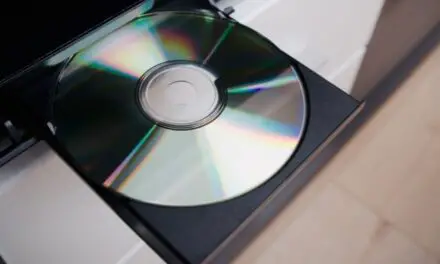It’s incredibly tempting, especially if you are in real need of a computer, to grab the cheapest laptop on sale, whether it’s off the shelf or ordered from Amazon.
Of course, not all laptops are created equally and if you opt for a cheap laptop, you are liable to waste a couple of hundred bucks on something you will inevitably regret buying.
It’s never a good idea to purchase a laptop that’s priced at rock bottom, just like you wouldn’t purchase a cheap TV for your family living room.
One of the biggest reasons behind the poor value of cheap laptops is that manufacturers are forced to cut too many corners across components and the build of the laptop itself.
But there’s a lot more to consider than that so let’s take a look at 18 reasons to never buy a cheap laptop.

Table of Contents
Cheap Laptops are Painfully Slow
If the price tag of the cheapest laptop you find tempts you, you’ll probably end up with a device that doesn’t have enough RAM (usually 4GB), has too little storage (usually 64GB), and an older mechanical hard drive (HDD).
These three things will work together to ensure that your computing experience is going to be a slow and frustrating one.
The low RAM will soon be consumed by the first few applications you install on your laptop and after that, you will face performance issues and regular system freezes.
The small amount of storage you get will soon fill up with apps and files leaving too little space for system updates, creating a never-ending cycle of updates not fully downloading or installing properly.
Another major issue is that large operating systems, like the newer versions of Windows, do not run smoothly on cheap, low RPM hard drives. They stack up on the problems of low RAM and an underpowered processor to create a frustratingly slow user experience. Even the Window’s start menu can take 2 to 4 seconds to respond.
HDDs retrieve data slower than newer SSDs and that means your budget laptop is not going to be very responsive. Every program you double-click on is going to be playing catch up.
It’s often said that an SSD is one of the most significant factors when it comes to speed. With HDD drives, an interior disk has to spin up, along with the read/write head moving as you are trying to access information. An SDD doesn’t require any such thing.
No matter how shiny your laptop looks when you pull it out of the box for the first time, starting it up will be an excruciating lesson in patience. Unfortunately, the start-up process is not where it ends either.
In your new laptop’s defense, several things are working against you right off the bat. A premium laptop would be able to handle these things just fine.
- Most laptops come loaded up with bloatware
- Multiple programs are probably running during the startup
- Your power-saving feature is probably enabled
- Auto-Windows update feature is probably running in the background as well
Since even a cheap laptop isn’t going to come loaded with viruses and malware, you probably don’t have to worry about those things, unless you purchased it used. However, an already slow, cheap laptop is going to struggle under the duress of bloatware and background programs.
Cleaning all of that up will temporarily get you somewhere between normal and snail’s pace but a cheap laptop is never going to impress anyone with raw speed.
The Build Quality is Very Poor
We glossed over this briefly in the intro but it’s a matter of fact that cheap laptops are practically built on a foundation of cut corners. For one, cheap laptops are going to come with an HDD hard drive, instead of the newer SSD (Solid-State Drives).
Of course, that’s just the beginning of the corner-cutting measures. There is also going to be a lot of cheap plastic and poor cooling capabilities. It’s like owning a brand new, shiny Apple iPhone that’s completely made of plastic and glass that was manufactured in the 1970s.
The cheapest laptops tend to flex more easily as you pick them up and this leads to cracks appearing over time. The hinges that you depend on to open and shut your laptop will also be poorly constructed and often fail within 2 or 3 years.
The trackpad is likely to be poor and unresponsive and the keyboard is likely to be low quality as well, with a sticky typing experience and a very short lifespan on the number of keystrokes it can handle.
Cheap Laptops Sound Terrible
Speaking of cheap hardware, there’s nothing quite like a set of weak, tinny speakers. When you stop and think about it, there are some really nice earbuds on the market with nothing more than 6mm drivers. If your laptop can’t even produce sound as good as 6mm drivers, you know that the manufacturers really had to throw the audio department under the bus.
In other words, there’s only so much that a manufacturer can put into the speakers without seriously driving up the price. So you can expect average to very poor performance from your laptop’s speakers.
If you are purchasing a laptop just for the streaming services that you can watch on there, the sound will be sorely disappointing, assuming that the laptop is capable of keeping up. You’ll probably spend a lot of time trying to tweak the equalizer and toy with audio enhancement software, none of which you should have to do.
They Have Very Poor Displays
Most of the cheaper laptops available on the market today are going to have just 720p or 1080p HD resolution displays with around 250 nits brightness, which is not very bright at all. Colors are going to appear very flat, viewing angles are going to be dreadful and a little daylight shining in the window will eliminate any visuals on your screen, and good luck using it outside on a bright day.
While a full HD screen may sound good in theory, the light levels and materials that go into cheap displays make even 1080p look washed out and lifeless.
Businesses are renowned for trying to pinch pennies and purchase laptops with low-quality displays for their employees. The result is reduced productivity and it’s almost entirely the fault of the poor display.
Poor displays can leech the life out of what you are doing on a computer. If you happen to be a journalist or a freelance writer, excellent display quality is a secret motivator, as the brilliant and vivid imagery improves what amounts to staring at a blank piece of paper with black fonts for a large part of your day.
Not only is the washed-out picture a complete shame, but the fewer pixels allow for less real estate. Everything seems more crammed on the page and if you’re a multitasker, poor display resolution and low pixel count amount to a torturous experience.
Cheap Laptops Are More Difficult To Upgrade
With premium laptops, your upgrade capabilities are often limited, depending on what is married to the motherboard. When it comes to cheaper laptops, everything is married to the motherboard to save space, not to mention the fact that it’s all surrounded by flimsy plastic.
There are exceptions to the rule, such as some HP Notebooks, but even those still come with limitations.
With cheap laptops, the most that you are going to be able to upgrade is the RAM and possibly the hard drive or the battery. The two latter options are always just a “possibility” and never a certainty.
When it comes to laptops, especially cheap ones, everything revolves around saving space, which is why everything tends to be soldered to the motherboard, which means it’s not upgradeable.
A computer technician could probably do it, but most people who buy laptops aren’t computer techs, so that’s usually neither here nor there. The other reason that you can’t upgrade most of the components on a cheap laptop is compatibility.
You are already dealing with cheap, low-efficiency components. If you upgrade one part, the other components are no longer going to be in harmony with the new part. To upgrade one, you have to upgrade all.
They Are Abysmal For Gaming
If your idea of “gaming” is endless rounds of Free Cell Solitaire, then a cheap laptop is right up your alley. Cheap laptops are terrible at gaming and you would probably short circuit the poor thing if you run an original Mario Bros emulator on it.
If you tried to run Red Dead Redemption 2, you would have to call the fire department if you didn’t completely brick your laptop. A cheap laptop will even struggle to let you stream AAA titles from a game streaming platform.
Then you would have to deal with the inherent lag that comes from streaming games, so you could take anything multiplayer and fast-paced, such as a first-person shooter right out of the equation.
Most of your cheaper laptops have the most basic GPUs with an Intel Celeron Processor that is good for little more than a little lighthearted journal keeping. Anything more complex than that is a bit of a struggle.
Related Article: Top 22 Reasons To Get A Tablet Instead Of A Laptop
Cheap Laptops Rarely Look Good
Aesthetically speaking, you can do a lot better. Cheaper laptops tend to be done up in plastic, with a glossy appearance that is more than happy to display every fingerprint from every instance that you touched it.
They’re also dust-collecting machines and that’s never a good thing when it comes to a computer’s ability to cool itself off.
Remember, manufacturers have to seriously cut corners to manufacture a budget laptop and that means cutting corners in terms of software, hardware, and the shell of the laptop.
They Come With Limited Storage
We’ve already covered the fact that SDDs are much more expensive than HDDs so you’re already going to be operating with a slower HDD if you opt for a cheap laptop. On top of that, you’re not going to get much storage with your cheap HDD either.
Unless you like to utilize cloud storage, you will probably fill up your hard drive faster than you can imagine. Since cheaper laptops are on the lower end of the low specification spectrum, you can expect something along the lines of 64 – 120GB of hard drive space.
Why cheap laptop manufacturers do this is beyond understanding, seeing as software is bigger than ever before, requiring more storage space. Not only that, but HD eats up more space as well, so downloading movies will fill up your hard drive mercilessly.
And once your storage is full of apps and files that you either can’t or don’t want to delete, downloading and installing software updates can become a real nightmare.
The Cheapest Laptops Are Terrible At Multitasking
I have owned two brutally slow devices in my time. One was a budget laptop that only came with 32GB of storage and 4 gigs of RAM.
The other one was an all-in-one PC that actually came with a generous amount of storage but only 4 gigs of RAM and a severely underpowered processor.
Both were rock bottom budget devices and both were horrible to use. Open up more than 2 applications at the same time or 3 tabs in the Chrome Web browser and witness your whole system grind to a halt.
A seriously frustrating experience.
It’s important to know how much RAM you need and 8GB should be a starting point.
As we mentioned earlier, multitasking already looks terrible on terrible screens. When you pile on the fact that a weak Celeron processor, low RAM, and a feeble GPU are going to have problems running multiple programs at the same time, things go from bad to worse.
It’s the nature of the beast. You can’t buy a low-end laptop and expect to stream a movie in the background while you are building a website on one app and conducting research on a split-screen.
Your laptop will quickly cry “uncle” and, at the very least, you will have to shut it down and restart. That’s assuming that it wasn’t worse than it could be. If you are a multitasker or you have a job where multitasking is essential, stay away from budget-buy laptops. They are your natural enemy. You have been warned.
They Have Limited Battery Life
If you think that a manufacturer is going to cut corners on the CPU, GPU, hard drive, and screen while leaving the battery in perfect, optimal condition, you would be quite wrong.
Cheap laptops will usually have smaller batteries which won’t give as much bang for your buck as larger premium ones.
Of course, it isn’t always the case. Granted, a cheaper laptop is going to have cheaper hardware and smaller batteries, however, it’s not like a cheap laptop is going to put the kind of strain on a battery that a high-end GPU will.
For the most part, though, you are going to get what you pay for and that includes a moderately functional battery.
Cheaper Laptops Tend To Be Less Ergonomic
Cheap laptop manufacturers can’t afford to focus on ergonomics. Budget Laptops are typically less streamlined, with all of the extra plastic components and shell. They are also boxier, with little in the way of creativity on the keyboard and display.
While it’s not the biggest deal killer on the planet, a laptop that lacks any kind of ergonomic design will take its toll on those of us who spend loads of time in front of our laptops.
They Usually Have Smaller Screens
This plays right into the lower resolution issues that you have with laptops and it’s also a part of what makes budget laptops inefficient for multitasking. There just isn’t enough real estate on the screen.
A smaller screen size will also help to make that lower resolution look a little less terrible.
It’s almost like the old medieval days when con artists would shave a little bit off of a gold coin and pocket it. Over time, those shavings added up for them but the coin itself continued to lose value.
That’s exactly what cheap laptop manufacturers do. They shave a little bit off at a time. Lower screen resolution? Check. Smaller screen real estate? Check. An aggravated buyer who got a lot less than they thought they would? Check.
The Cheapest Of Laptops Have Flimsy Trackpads And Sticky Keys
We mentioned this a little bit at the top and it’s worth repeating here. In fact, you will probably end up purchasing an alternate mouse and possibly even a keyboard to take the place of the cheap trackpad and poor keys.
By the time you go out and purchase these extras, you may as well have dumped an extra $100 into your choice of laptop. Sometimes $100 is all that stands between a budget laptop and a decent mid-range.
A Poor Selection Of Input/Output Ports
Most of today’s laptops, running from mid-range selections on up, have several ports that you will recognize on a budget laptop. However, on better laptops, there will be more of them and the familiar ones will have a significant upgrade.
Several ports will you will want with a laptop and most of them won’t be available on cheaper laptops.
- USB-C 3.2 or later
- HDMI 2.1 or better
- Ethernet
- SD or microSD slot
- Standard USB ports
- Old school VGA isn’t a make-or-break necessity but it’s nice to have
Budget laptops are likely going to stick with your standard USB outlets that have been a mainstay on computers for years and you will probably be limited to one, rather than two. You won’t find a USB-C port on a budget laptop and the HDMI port is up in the air. Even if there is an HDMI port, it’s not going to be 2.1.
A Shorter Lifespan
This one just goes without saying. It’s like the story of The Three Little Pigs, the houses made out of straw and wood just didn’t stand up when it counted, while the brick house withstood everything the wolf could throw at it.
Laptops are no different. If you buy cheap, you get cheap components. If you have cheap components, they won’t last.
Generally, a laptop under $700 will last you anywhere from 2 to 4 years, while laptops that cost in excess of $1,000 usually last 7 years plus.
Cheap Laptops Are Noisier
A laptop’s fan will come on when the laptop starts to get under pressure. Unfortunately, cheap laptops get themselves under pressure real easily.
Anything more complicated than a calculator on a cheap laptop, the fan is going to kick on. For two, it will seem like the fan is constantly running and making noise, probably because it really is.
Cheaper laptops cram a lot of hardware very close together to make room and save space. That makes for a lot of heat so your fan is going to be running. A lot.
Most of the things that are commonplace when using computers are going to apply a lot of pressure on underpowered components and the laptop simply has to keep itself cool
They Overheat More Easily
This runs right along with the last point. They overheat more easily simply because everyday tasks on computers are becoming more complicated. Yesterday’s components simply don’t cut it anymore.
Combine all of that with the fact that budget laptops have all of their components crammed close together and you have a recipe for high heat scenarios. Heat is the natural enemy of computer components and it’s the biggest factor when it comes to reducing your laptop’s life span.
Their Listed Specs Are Often Wrong
Shopping on certain enormous e-commerce sites that we won’t mention is highly convenient with a price point to match every. However, there are some drawbacks to shopping in these massive online stores.
When sellers can source their own generic, unbranded laptops to list on massive online stores, they often list the device’s specifications wrong.
It’s unclear whether sellers do this because they don’t know the specs themselves because they can’t be bothered to list them properly or because they just want to make their laptop sound more appealing to a potential buyer.
Either way, on many of the cheapest unbranded, generic, drop-shipped laptops the listed specs are wrong and you are being deceived.
If you absolutely have to go with a cheap laptop, stay away from the laptops that are not recognizable, name-brand computers.
You should also learn the ins and outs of component costs so you can recognize when a generic brand is marketing a laptop with a high-end CPU and GPU for pennies on the dollar.
If it seems too good to be true, it probably just is.



